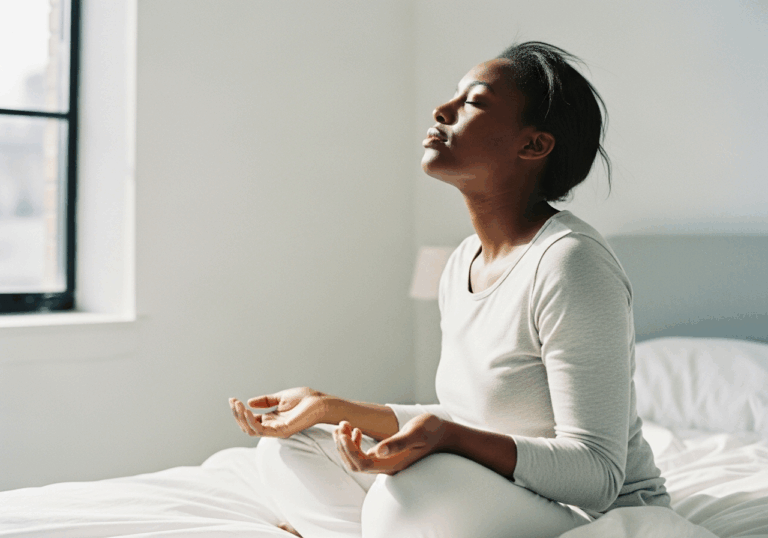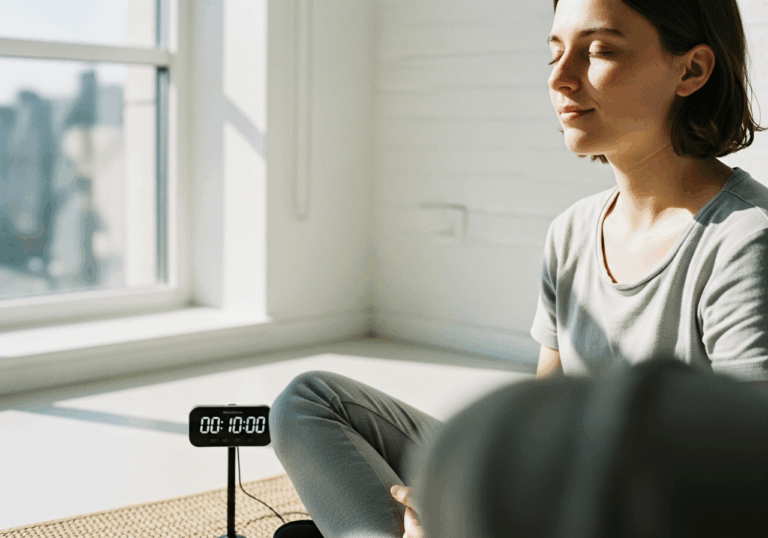Science-Backed Tips
Ground Your Anxiety: Wiggle Your Toes
Reduce heart rate by ~5 bpm in just 1 minute.
📊 Did you know?
💡 Why It Matters
1️⃣
Grounding techniques can provide immediate relief from anxiety symptoms, evidenced by a measurable heart rate decrease.
2️⃣
Reducing heart rate by ~5 bpm can enhance overall emotional stability and improve daily functioning.
3️⃣
Simple physical actions like toe wiggling can be easily integrated into daily routines for anxiety management.
✅ Try These Micro-Tips
🎯
Wiggle your toes and press your feet into the ground for 1 minute during anxiety episodes.
🎯
Practice grounding techniques 2-3 times a day to reinforce calming effects.
🎯
Combine toe wiggling with deep breathing exercises for enhanced relaxation.
🎯
Incorporate grounding practices into your morning routine to start the day with reduced anxiety.
📚 The study
A study conducted by Carver & O’Malley (2015) explored the physical grounding effects on anxiety physiology, revealing that participants who pressed their feet and wiggled their toes during anxiety episodes experienced a notable decrease in heart rate—approximately 5 beats per minute.
This seemingly small change can have a significant impact on emotional stability and daily functioning.
Grounding techniques, such as tactile contact with the ground, not only promote physical calmness but also help stabilize mood.
The beauty of these techniques lies in their simplicity; actions like toe wiggling can be seamlessly integrated into daily routines, providing immediate relief from anxiety symptoms.
By incorporating such grounding practices, individuals can take proactive steps towards managing their anxiety, enhancing their overall well-being.
This research highlights the importance of physical actions in emotional regulation, offering a practical tool for those seeking to navigate the challenges of anxiety with greater ease.
❓ Frequently Asked Questions ❓
Learn more
What is grounding and how does it help with anxiety?
Grounding is a technique that involves physical contact with the ground to enhance emotional stability. It helps reduce anxiety symptoms by calming physiological activation, evidenced by a measurable heart rate decrease.
How does wiggling toes affect heart rate during anxiety episodes?
Wiggling toes and pressing feet into the floor can lead to a heart rate reduction of approximately 5 bpm. This simple action promotes physical calmness and stabilizes mood during anxiety episodes.
How long should I practice grounding techniques?
Practicing grounding techniques for about one minute can be effective in reducing anxiety symptoms. It is recommended to incorporate these techniques 2-3 times a day for optimal benefits.
Can grounding techniques be integrated into my daily routine?
Yes, grounding techniques like toe wiggling can easily be integrated into daily routines. They can be practiced during moments of anxiety or as part of a morning routine to start the day with reduced anxiety.
What are the physiological effects of grounding on anxiety?
Grounding techniques have been shown to decrease heart rate, leading to improved physiological calmness. This reduction in heart rate can enhance overall emotional stability and improve daily functioning.
Is there a specific way to wiggle my toes for grounding?
To practice grounding, simply wiggle your toes and press your feet firmly into the ground. This tactile contact helps anchor you in the present moment and can alleviate anxiety symptoms.
Can I combine grounding with other relaxation techniques?
Yes, combining grounding techniques with deep breathing exercises can enhance relaxation. This combination can provide a more effective approach to managing anxiety symptoms.
How quickly can I expect to feel the effects of grounding?
Many individuals may notice a calming effect almost immediately after practicing grounding techniques. The measurable heart rate decrease often occurs within just one minute of engaging in these actions.
Are there any risks associated with grounding techniques?
Grounding techniques are generally safe and can be beneficial for most individuals experiencing anxiety. However, if you have specific health concerns, it’s advisable to consult a healthcare professional before starting new practices.
What should I do if grounding techniques don’t work for me?
If grounding techniques do not provide relief, consider exploring other anxiety management strategies or therapies. It may also be helpful to consult a mental health professional for personalized guidance.





